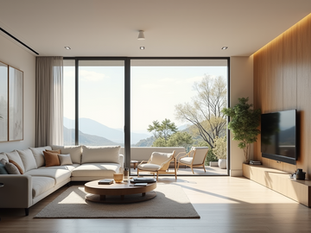
Embracing Sustainable Design in the Philippines
The Rising Demand for Sustainability
Recent studies show that 78% of Filipino buyers now prefer properties that incorporate sustainable practices. Whether it's energy-efficient lighting, renewable energy sources, or smart water management, sustainability is becoming a key factor in purchasing decisions.
The Philippine Green Building Council (PhilGBC) also notes that certified green buildings command higher rental and resale values compared to conventional structures, further incentivizing developers and architects to prioritize sustainability.
The Challenges of Sustainable Design in the Philippines
Despite its clear benefits, sustainable design faces several hurdles:
Perceived Higher Initial Costs: Many developers fear sustainability measures increase upfront construction expenses.
Limited Knowledge and Expertise: Architects and engineers often lack familiarity with sustainable technologies and practices.
Regulatory and Certification Complexity: Navigating through certifications and complying with local regulations can be challenging.
Resistance to Change: Traditional practices are deeply rooted, making stakeholders hesitant to adopt innovative solutions.
Why Sustainable Design Matters Now
Ignoring sustainability isn't just environmentally irresponsible—it's economically risky. Climate resilience is crucial in a country frequently impacted by extreme weather. Buildings designed sustainably offer better durability, lower maintenance costs, and enhanced occupant safety and comfort.
Moreover, with global and local sustainability commitments strengthening, regulations are becoming stricter. Early adopters of sustainability will be better positioned for future regulatory compliance, enhancing their market competitiveness.
Key Sustainable Design Principles for Philippine Projects
To effectively integrate sustainable design, consider the following principles:
1. Energy Efficiency
Use passive cooling strategies suited to the Philippine climate.
Implement solar energy solutions and efficient lighting systems.
2. Water Management
Adopt rainwater harvesting systems.
Install water-efficient fixtures to significantly reduce consumption.
3. Material Selection
Choose locally-sourced, recycled, or sustainably-produced materials to reduce environmental impact.
4. Waste Reduction
Implement comprehensive waste management systems that prioritize recycling and reuse.
Practical Solutions: Implementing Sustainable Designs
Here's a simplified framework to guide sustainable project implementation:
Initial Assessment: Identify sustainable goals relevant to your project.
Design Integration: Embed sustainability into your core architectural and engineering designs.
Technology and Material Selection: Evaluate and choose sustainable technologies and materials that offer long-term efficiency.
Monitoring and Certification: Utilize tracking systems to monitor sustainability performance. Seek green certification from reputable organizations, like PhilGBC’s BERDE rating system.
Local Success Stories
Consider successful sustainable projects in the Philippines:
Arya Residences (Bonifacio Global City): Achieved LEED Gold certification, significantly reducing energy and water usage.
The Net Lima Building (Taguig): Integrated passive cooling and advanced lighting systems, reducing energy consumption by nearly 40%.
These examples show that sustainable design isn't merely possible; it’s profitable.
Behavioral Science: Encouraging Sustainable Practices
Encourage sustainability adoption using these principles:
Social Proof: Highlight successful local case studies to showcase feasibility and profitability.
Nudging: Create incentives for choosing sustainable materials and methods.
Loss Aversion: Emphasize potential losses from regulatory fines and reduced market competitiveness if sustainability is neglected.
Sustainable Design Roadmap
Begin your sustainable design journey effectively:
Conduct Sustainability Training: Educate teams about sustainable practices.
Engage Sustainability Consultants: Leverage expert guidance to efficiently implement green practices.
Pilot Sustainable Initiatives: Begin with smaller projects, evaluating effectiveness and scalability.
Expand and Standardize Practices: Gradually incorporate sustainable practices into all projects, establishing clear guidelines and expectations.
The Future of Sustainable Construction
The future of construction in the Philippines is sustainable. Adopting sustainable design isn't simply about doing the right thing—it’s about future-proofing your investments, meeting consumer expectations, and positioning your projects at the forefront of market innovation.
Are you ready to build smarter and greener? Contact UODC Architects today, and let’s discuss how we can bring sustainable excellence to your next project!




